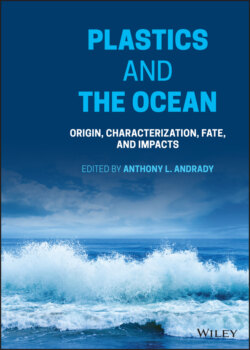Читать книгу Plastics and the Ocean - Группа авторов - Страница 14
1.1 What Are Plastics?
ОглавлениеThe term “plastic” is used in common parlance as if it is a single material. But it is, in fact a broad category of materials that include hundreds of different types. Plastics are a sub‐class of an even larger group of materials called the polymers, characterized by their unique long chain‐like molecular architecture, made up of repeating structural units. They tend to be giant molecules with average molecular weights (g/mol) in the range of 105–106 (g/mol). Being a subset of polymers that can be melted and re‐formed into different shapes repeatedly, they are therefore called thermoplastics. The word “plastic” is derived from ‘thermoplastic [See Box 1.1]. Hundreds of chemically distinct types of thermoplastics exist, even though only a few are used in most consumer plastic products.
This is somewhat analogous to the about 95 elemental examples in the group ‘metals’ and their numerous commercially available blends, even though only a few common ones such as copper or aluminum are extensively used. The same is true of plastics, but even within a single type of plastic such as polyethylene (PE)1 several different varieties of resins with different characteristics are available. For instance, the common varieties of PE are low‐density polyethylene (LDPE), high‐density polyethylene (HDPE), medium‐density polyethylene (MDPE), and linear low‐density polyethylene (LLDPE) resins. Each of these varieties includes different grades of that plastic with range of properties despite their identical repeat‐unit chemical structure. For instance, one grade of LDPE (low molecular weight grade) is a soft wax used as a lubricant, while another (ultra‐high molecular weight grade) of PE, is spun into fibers so strong that they are used as an antiballistic material in military hardware. Therefore, in research reports, identifying a material just as a “plastic” or even as “polyethylene” is not particularly informative; details of at least the type, if available the grade, and its basic properties should be mentioned in order to compare data across publications.
